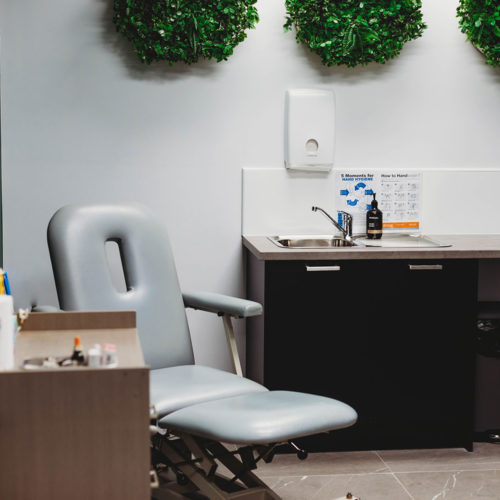Verruca Pedis / Plantar Warts
These painful little terrors can pop up without much warning and can spread just as quickly. Often, Verruca Pedis or more commonly known as plantar warts are often mistaken for corns and vice versa.
Generally, Verruca Pedis appear on the sole of your foot and burrow on top of the dermal layer of skin, appearing as a hard, somewhat, cauliflower-like lump of tissue with small black spots within the lesion (dry blood). They can often be confused with corns or callus due to callus forming over the top of the wart.
Plantar warts present in several ways, the most common ways being singular or as multiple warts over a small area (mosaic wart). Generally, the mosaic wart consists of a large central lesion surrounded by several small warts. Warts can look similar to callus/corns, but if squeezed either side of the lesion, plantar warts will present more painful compared to corns, which are more painful when pressed directly upon.
Verruca Pedis are the result of the human papilloma virus (HPV) that is often transferred in communal areas where people are regularly barefoot. Places such as public pools/showers or hotel room showers are among the most common places to pick up the HPV pathogen. They often arise when the immune system is compromised via illness, pregnancy and in children – when they are building their immune system. If the immune system isn’t in optimal condition Verruca Pedis treatment can be very difficult!
Treatment
The lesions are particularly difficult to resolve as the virus is virulent and the lesions tap into the blood and nerve supply to survive. Not all Verruca Pedis are treated, particularly those patients that are pregnant or of a young age – but if symptomatic due to the plantar pressure treatment can be advised. Over the counter applications are successful in some cases.
However, the majority of cases require more aggressive treatment such as freezing with liquid nitrogen or applying more acidic treatment. Our Podiatrist’s generally attempt to use more aggressive treatment options that involve engaging the immune system to allow the immune support to fight the virus off.
More invasive options involve curettage treatment – This is a surgical procedure under local anaesthetic and phenol – Our Podiatrist’s may use this for larger and long-standing Verruca Pedis.
My tip: If unsure get the lesion assessed with a Podiatrist. Verruca Pedis only get bigger or may spread if left untreated.
Take Home Messages
-
Cauliflower like lump of tissue with small black spots within the lesion (dry blood)
-
May be underlying beneath callus layers
-
Can be singular or mosaic
-
Pinch/Squeeze test either side of lesion presents painful in most Verruca Pedis.
-
History of immunosuppression and / or exposure to communal areas barefoot








